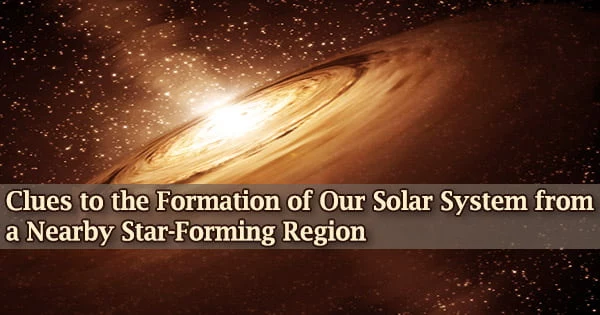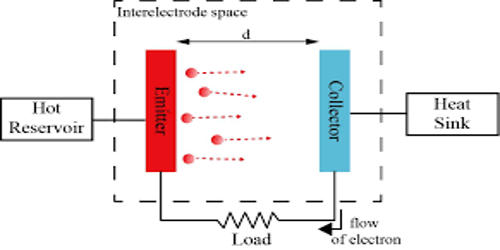Astronomers are learning more about the conditions under which our solar system was formed thanks to an active star formation zone in the constellation Ophiuchus. A new analysis of the Ophiuchus star-forming complex, in particular, reveals how our solar system may have grown enriched in radioactive elements with short half-lives.
Scientists analyzing particular mineral inclusions in meteorites concluded that they were pure remnants of the infant solar system and contained the decay products of short-lived radionuclides, and evidence of this enrichment process has been around since the 1970s.
A nearby exploding star (a supernova) or the strong stellar winds from a type of large star known as a Wolf-Rayet star could have blasted these radioactive elements onto the young solar system.
The researchers used multi-wavelength observations of the Ophiuchus star-forming region, including spectacular new infrared data, to reveal interactions between star-forming gas clouds and radionuclides produced in a nearby cluster of young stars, according to a new study published in Nature Astronomy on August 16.
Supernovas in the star cluster are the most likely source of short-lived radionuclides in the star-forming clouds, according to their research.
“Our solar system was most likely formed in a giant molecular cloud together with a young stellar cluster, and one or more supernova events from some massive stars in this cluster contaminated the gas which turned into the sun and its planetary system,” said coauthor Douglas N. C. Lin, professor emeritus of astronomy and astrophysics at UC Santa Cruz.
“Although this scenario has been suggested in the past, the strength of this paper is to use multi-wavelength observations and a sophisticated statistical analysis to deduce a quantitative measurement of the model’s likelihood.”
Data from space-based gamma-ray telescopes enable the identification of gamma rays released by the short-lived radioactive aluminum-26, according to first author John Forbes of the Flatiron Institute’s Center for Computational Astrophysics.
Our solar system was most likely formed in a giant molecular cloud together with a young stellar cluster, and one or more supernova events from some massive stars in this cluster contaminated the gas which turned into the sun and its planetary system. Although this scenario has been suggested in the past, the strength of this paper is to use multi-wavelength observations and sophisticated statistical analysis to deduce a quantitative measurement of the model’s likelihood.
Douglas N. C. Lin
“These are challenging observations. We can only convincingly detect it in two star-forming regions, and the best data are from the Ophiuchus complex,” he said.
Many dense protostellar cores in various phases of star formation and protoplanetary disk growth may be found in the Ophiuchus cloud complex, which represents the earliest stages in the formation of a planetary system.
The researchers were able to visualize a flow of aluminum-26 from a nearby star cluster toward the Ophiuchus star-forming area by merging imaging data at wavelengths spanning from millimeters to gamma rays.
“The enrichment process we’re seeing in Ophiuchus is consistent with what happened during the formation of the solar system 5 billion years ago,” Forbes said. “Once we saw this nice example of how the process might happen, we set about trying to model the nearby star cluster that produced the radionuclides we see today in gamma rays.”
Forbes created a model that takes into consideration the mass, age, and likelihood of exploding as a supernova of any massive star that could have existed in this region, as well as the potential yields of aluminum-26 from stellar winds and supernovas. He was able to use the model to calculate the possibilities of various scenarios for the manufacturing of aluminum-26, which is still in use today.
“We now have enough information to say that there is a 59 percent chance it is due to supernovas and a 68 percent chance that it’s from multiple sources and not just one supernova,” Forbes said.
Lin explained that this form of statistical research assigns odds to situations that have been debated by astronomers for the past 50 years.
“This is the new direction for astronomy, to quantify the likelihood,” he said.
The new studies also demonstrate that the amount of short-lived radionuclides integrated into freshly developing star systems varies greatly.
“Many new star systems will be born with aluminum-26 abundances in line with our solar system, but the variation is huge several orders of magnitude,” Forbes said. “This matters for the early evolution of planetary systems, since aluminum-26 is the main early heating source. More aluminum-26 probably means drier planets.”
Coauthor João Alves of the University of Vienna gathered the infrared data, which allowed the team to peek through dusty clouds into the heart of the star-forming complex, as part of the European Southern Observatory’s VISION investigation of nearby stellar nurseries using the VISTA telescope in Chile.
“There is nothing special about Ophiuchus as a star formation region,” Alves said. “It is just a typical configuration of gas and young massive stars, so our results should be representative of the enrichment of short-lived radioactive elements in star and planet formation across the Milky Way.”
Data from the European Space Agency’s (ESA) Herschel Space Observatory, the ESA’s Planck satellite, and NASA’s Compton Gamma Ray Observatory were also utilized by the researchers.
















